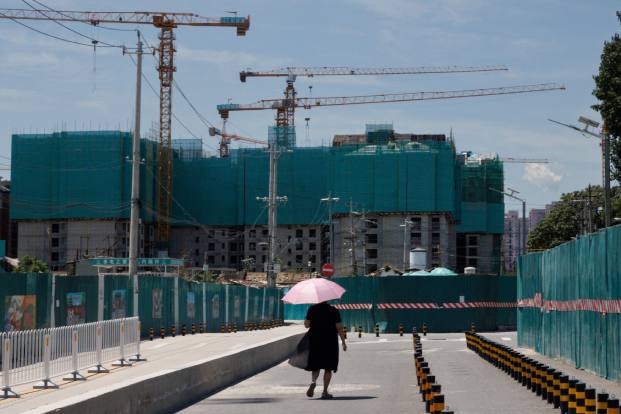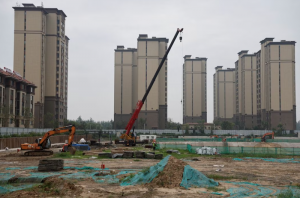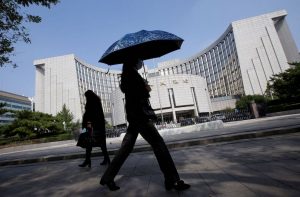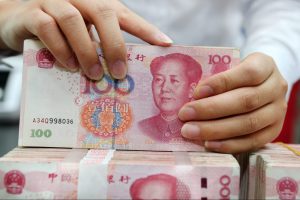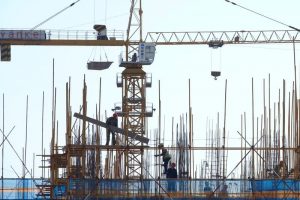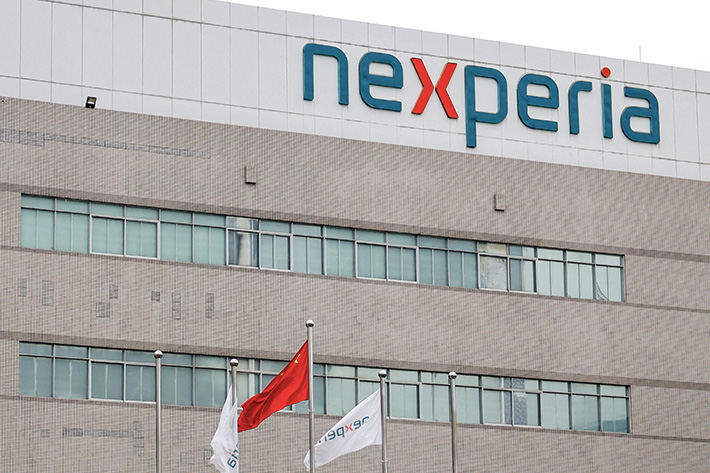China’s regulators have asked banks to fund housing projects and meet the funding needs of real estate developers in a bid to calm worries over a widening mortgage-repayment boycott crisis.
The China Banking and Insurance Regulatory Commission (CBIRC) has stepped in after an increasing number of home buyers across the country threatened to stop repaying loans on stalled real estate projects.
Shares of the big four banks rose and the Hang Seng Properties Index was up 2.4% after the CBIRC reaffirmed a vow made late last week to strengthen its coordination with other regulators to “guarantee the delivery of homes.”
China’s central bank, meanwhile, stepped up cash injections through open market operations on Monday, snapping a 10-day streak of a minimal 3 billion yuan ($444.61 million) of daily offering.
The People’s Bank of China (PBOC) injected 12 billion yuan ($1.78 billion) via seven-day reverse repurchase agreement at a cost of 2.1%, a statement online showed. With 3 billion yuan worth of the short-term liquidity tool due on Monday, the PBOC injected a net 9 billion yuan.
Filling The Funding Gap
In an interview with the official China Banking and Insurance News on Sunday, the CBIRC reiterated that it would support local governments to promote home delivery, and expressed confidence that with concerted efforts, “all the difficulties and problems will be properly solved.”
More specifically, the regulator urged banks to “shoulder social responsibility” and actively participate in a study of plans to fill the funding gap, so that the construction of stalled housing projects can be resumed swiftly and homes can be delivered to buyers early.
It also urged banks to strengthen communication with mortgage clients and support acquisitions of housing projects to help stabilize the property market.
In addition, the watchdog said that financial risks in the northeastern province of Liaoning has been growing recently but were under control, and the government will take measures to prevent risks at China’s small lenders.
Metals Prices Rise
Industrial metal prices rose on Monday on news of China’s efforts to avert a potential crisis in the real estate sector, which consumes vast amounts of metal.
Three-month copper on the London Metal Exchange (LME) rose 1.9% to $7,325.50 a tonne by 0704 GMT, rebounding after hitting $6,955 in the previous session for its lowest since November 2020.
The most-traded August copper contract on the Shanghai Futures Exchange advanced 3.3% to 56,390 yuan ($8,356.05) a tonne.
ShFE tin climbed 4.6% to 194,890 yuan a tonne, while zinc added 3.5% to 22,660 yuan, lead was up 3.6% at 15,040 yuan and aluminium rose 3.2% to 17,830 yuan.
LME aluminium was up 1.5% at $2,379 a tonne and zinc advanced 1.9% to $2,970 a tonne.
“(Metals) prices falling) was a risk-off pull back due to the fear of more developers going under. Developers in China are having a relief rally … so the construction project cliff is averted for now,” one trader said.
Easing of a red-hot rally in the dollar also helped metals prices, which are traded in the US currency on the LME.
Yuan Higher
Meanwhile, China’s yuan recovered from last week’s two-month low on Monday, as the central bank guided it higher amid tempered investor expectations about a more aggressive Federal Reserve rate hike this month.
Prior to the market opening, the People’s Bank of China (PBOC) set the midpoint rate at 6.7447 per dollar, 56 pips firmer than the previous fix 6.7503.
In the spot market, the onshore yuan opened at 6.7480 per dollar and was changing hands at 6.7463 at midday, 117 pips firmer than the previous late session close.
The spot yuan hit a low of 6.77 per dollar on Friday, the weakest since May 17.
- Reuters with additional editing by Jim Pollard
Note: This report was updated with further information on July 18, 2022.
ALSO READ:
China Stocks Plunge as Homebuyers Refuse to Repay Loans
China Property Loans Grow After Bank Curbs Loosened
Half of Big China Banks Cut Loans to Property Sector – Nikkei




